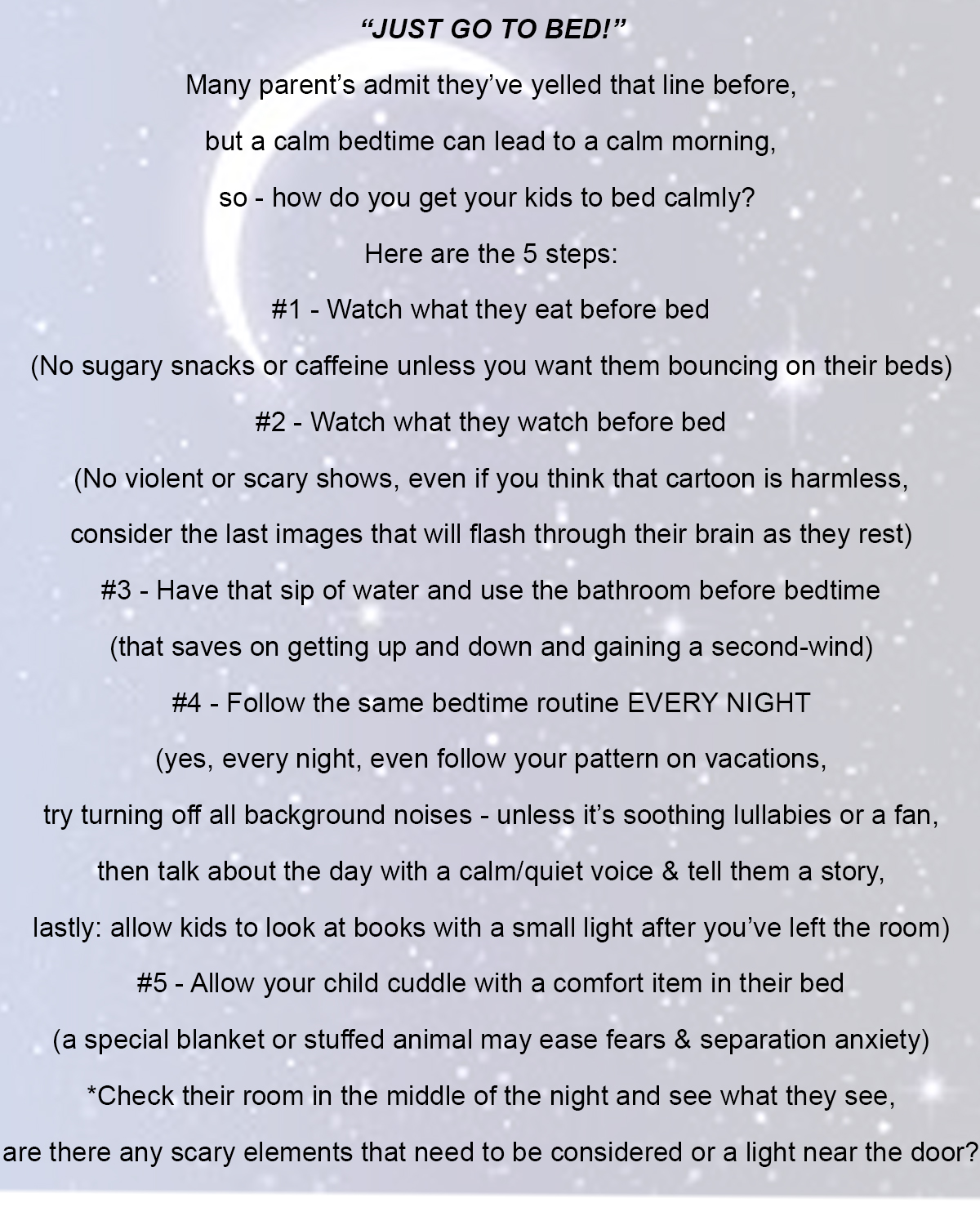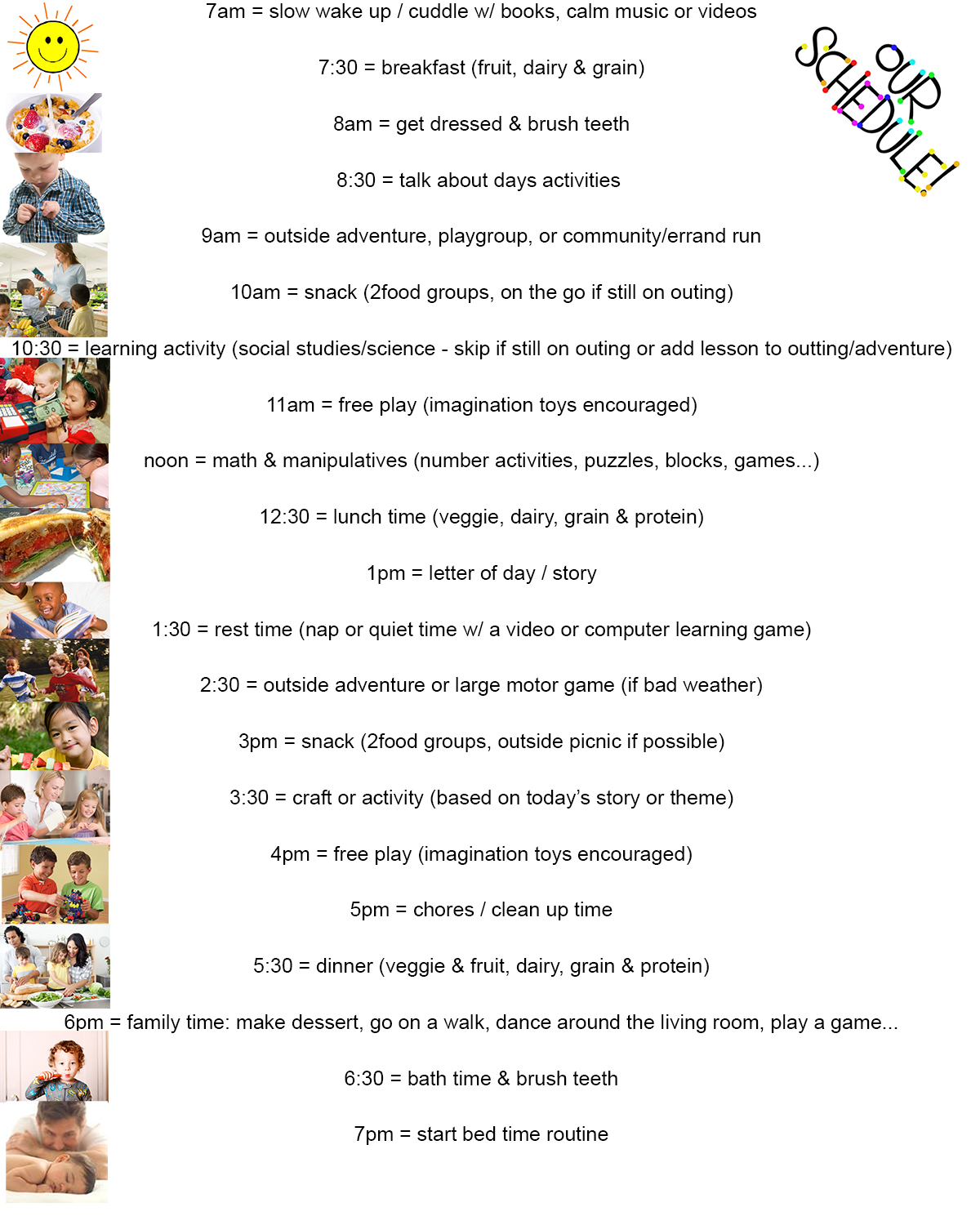It’s been a bit over a week since we did the whole “spring forward” time change, but I still hear parents talking about how it’s affecting their homes. Kids are having a hard time falling asleep and even a harder time waking up. Some kids are acting tired and crabby all day. Providers are noticing that kids are anxious for spring-outdoor-adventures. Is the time change harder when snow still covers much of Michigan? Is the time change affecting all homes the same? Is there a way to prepare kids for the time change?
I looked into that question and found a helpful answer – which is that “yeah it’s harder when we can’t feel spring yet,” but homes that prepared their kids had an easier transition. How did they prepare them? Some parents/providers explained the day-light-savings-concept even to their little ones, then made a visual schedule showing when the sun and moon rise and set. The week before the “turn your clocks ahead” night they planned out going to bed 10 mins earlier each night so that Sunday morning didn’t feel an hour earlier. Want your kids to sleep in that extra hour for the “fall back” change? Try keeping them up 10 mins later each night for that week before. Some people have eternal sleep schedules, some people need to train their sleep patterns. Here’s how much you should be sleeping:

why is this posted here? it’s important sleep info for the littlest ones in your care – and b/c if you know they are safe and you are calm that = less chaos !
Why are sleep routines important to know about? Because rest is one of those answers to changing chaos to calm in kids behaviors. Our past blogs have talked about turning chaotic environments into calm spaces and one way is to schedule adequate sleep times. What if your kid isn’t that one who nicely lays down and falls asleep instantly? (I know my kids aren’t) … Well, here are some tricks and tools to try:
If your day is too busy, your lil’ one might have a hard time winding down for bed time – and on the flip side – if your day is sitting in the house watching tv he or she might not be ready to sleep, because they haven’t burned their energy off yet! So try and schedule your day keeping your kids busy, but with times to relax and times to engage their bodies and minds. How much of relaxation vs engagement depends on the age/stage of the kids involved. Stage is often more important that age. In our house the little brother needs much more physical outlet during the day than his big brother. Each kid is different so you’ll haveta play around with schedules and see what works best. Here’s a great example of a daily routine:
A routine is a repetitive and predictable schedule. Many parents and professionals believe that routines are the number one way to turn a chaotic child into a calm one. Once you figure out the schedule that works best for the kids in your care, try and stick with it. If you have to change up the schedule show them their typical day schedule and point out the activities you will not be doing, and tell them what you’ll be doing instead. When possible, let them decide parts of their schedule such as “do you want to go outside first or do our coloring page first?” Kids often know what their bodies and minds are ready to accomplish, so listen to their suggestions. Also, letting them feel they have choices goes a long way for keeping them calm, but limit choices as that can add anxiety with too many options…
We’ll talk more about choices and planning activities in the next blog – so make sure you check back!





Leave a Reply